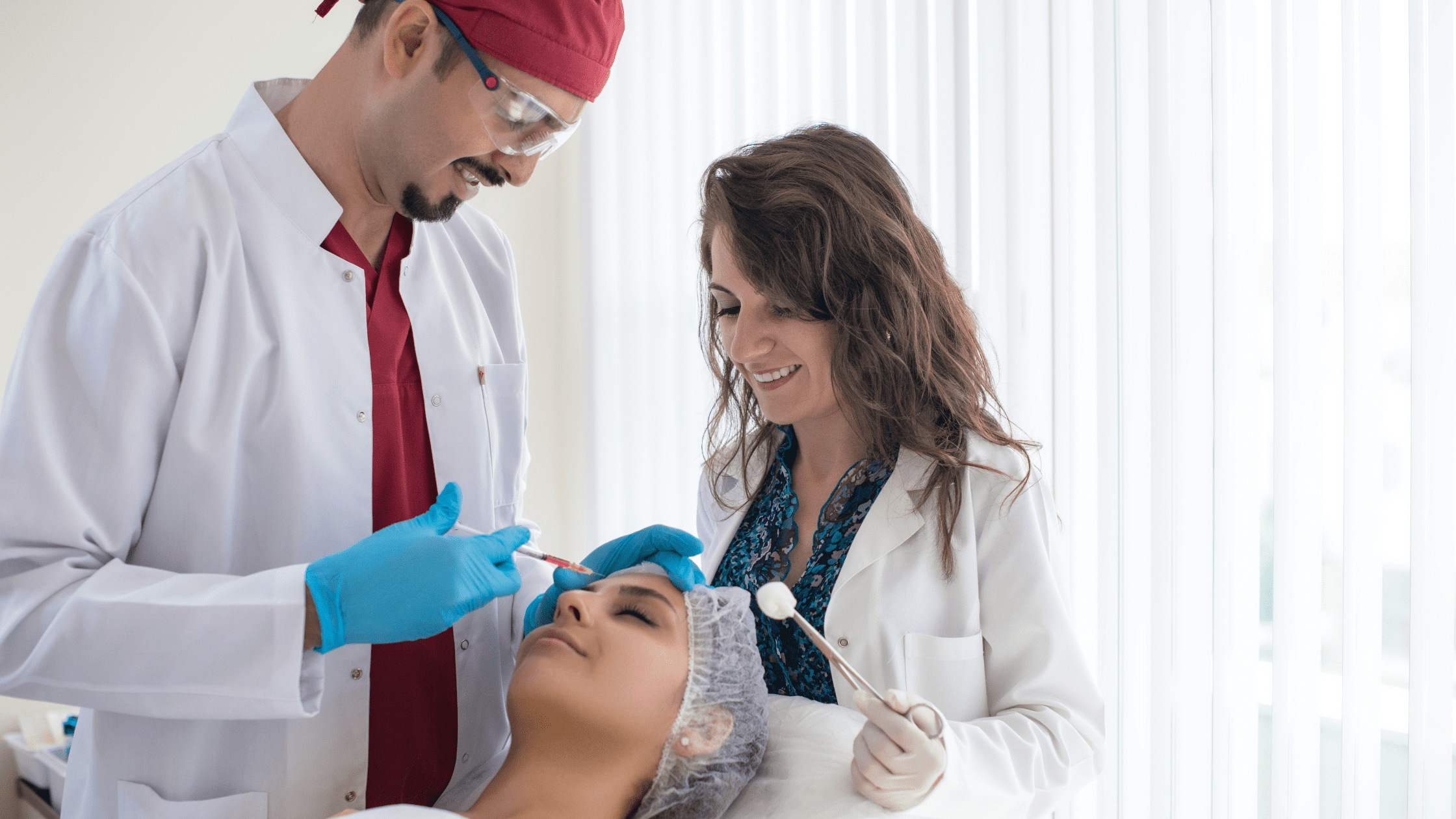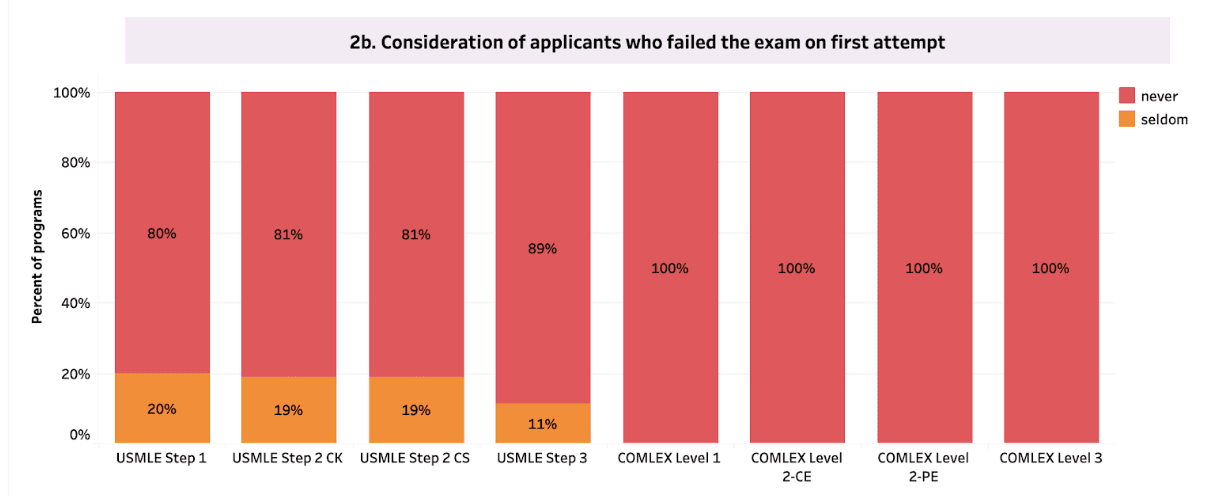Acceptance Factors for Matching into Plastic Surgery Residency

10012 Views
How to Match into a Plastic Surgery Residency Program
Residency application season is upon us, so let’s talk Plastic Surgery Residency Programs! The NRMP conducted a survey to determine what factors Program Directors consider when deciding which candidates to interview and rank for their plastic surgery residency program. The results were compiled into a “at a glance” tool, which is extremely helpful in gauging where your application packet stands compared to the applicant pool, and whether adding additional components, like a letter of recommendation (LOR) in the specialty, could give you a leg up as programs review your application.
The interactive tableau tool can be found here, and we recommend taking a look at the specialty you’ll be applying to before submitting your ERAS packet: https://public.tableau.com/profile/national.resident.matching.program#!/vizhome/PDSurvey_0/Desktoptablet
For plastic surgery residency specifically, major components of the survey you should pay attention to include: (from top to bottom of the page):
- Selection Criteria for an Interview – Step 1 in the specialty is a MAJOR factor, while having an appropriate strong letters of recommendation and a strong MSPE/Dean’s letter are also highly recommended.
-
Step 1 and Step 2 Scores:
- Step 1 – Score
-
-
- 258+ looks like a very solid score in plastic surgery, with the median score that is almost always granted an interview being 250.
- Range programs do NOT typically offer interviews: 220-240 seems to be the minimum threshold we would recommend for having a good chance at enough interviews. If you’re below 230-235 range, we suggest having a back-up specialty you could consider.
- Range programs DO typically offer interviews: 250+ seems to be the range at which you can feel comfortable in being offered interviews by a decent number of programs. If you’re in the 258+ range, you can likely be selective about where you apply.
-
- Step 2CK – Score
-
-
- 230-240 seems to be the minimum threshold at which programs will grant interviews
- Scores below 230 generally will place you in a unfavorable position to receive an interview
-
- Step 2CK – Timing of Taking the Exam
- A full 81% of programs almost never often interviews to applicants who have failed CK. You should take CK before you have submitted ERAS.
- Failing Step 1 is very likely to be a show stopper:
- Failing Step 1 is a BIG deal in ANY specialty, and this is especially relevant in plastic surgery. 80% of plastics programs will NOT consider you if you’ve failed Step 1, and 81% will NOT consider you if you’ve failed Step 2. So, if you’ve failed an exam, you can still apply, but you should apply to a BIG number (100+) of programs. 20% and 19% of programs seldomly consider applicants who have failed Step 1 and Step 2, respectively.
-
Types of Applicants Considered:
- International Grads (U.S. and non-U.S.) are more likely to have difficulty matching into plastic surgery: Only 5% of programs consider interviewing or ranking IMGs (U.S. and non-U.S.) on a routine basis. 74% consider U.S. IMGs seldomly, 21% never consider interviewing them, and 26% never consider ranking them. If you’re a non-US IMG, 53% of programs never consider interviewing while 56% never consider ranking. We recommend doing your homework to determine which programs may be more likely to consider IMGs, and definitely recommend a back-up specialty to apply into.
- Osteopathic graduates will have a harder matching into plastic surgery: Only 5% of programs will routinely interview and rank DO applicants. 37% and 42% respectively of programs will never interview or rank a DO applicant. With the remaining 53-58% that seldomly consider DO applicants, it is very important to do your research to identify these programs so that you can best increase your chances of matching.
- Interviewees Get Ranked!: If you get an interview invitation, you are very likely to end up on the rank list if you interview. We recommend making a rankings list of at least 8-10 programs, so once you receive 10 interview invitations, you can feel okay with starting to prioritize and cancel as more come in given you are likely to get ranked.
- Expect to receive interview invitations in November: 80% of the interview invitations will be sent out in October-November. Expect to hear very little from plastic surgery programs for the first month after you submit your ERAS.
- Expect to interview in December/January: Only 13% of interviews will occur before December, which gives you ample time to prepare. For further discussion on how to prep for your interview, see our blog post on How to Crush your Residency Interview.
After you’ve browsed your specialty, take a look at a few other specialties and note what’s NOT important for plastic surgery residency matching:
- Class ranking isn’t particularly important in plastic surgery
- Personal prior knowledge and evidence of your commitment to the specialty aren’t particularly important for plastic surgery
Summary for Plastic Surgery Residency Applications:
- A solid plastics application would include a 250+ on Step 1, 245+ on Step 2, a LOR from 1-3 plastic surgeons, and a strong MSPE/Dean’s letter.
- Plastic surgery is not particularly IMG friendly, but it is possible to match as an IMG if you do your research to identify programs with active IMG residents and establish proper connections.
- If you’ve failed an exam, you can still apply in plastic surgery, but you should apply very broadly and apply for a back-up specialty.
- Expect Interviews in December-January. Reach out to programs you have high interest in if you haven’t heard from them by mid-November. Once you have about 10 interview invitations, you can consider being a bit more selective about which ones you actually take (but not before).
If you need help to identify a potential residency program, our residency advisors are highly experienced in application and interview preparation.
Good Luck! ☺
Featured Articles




